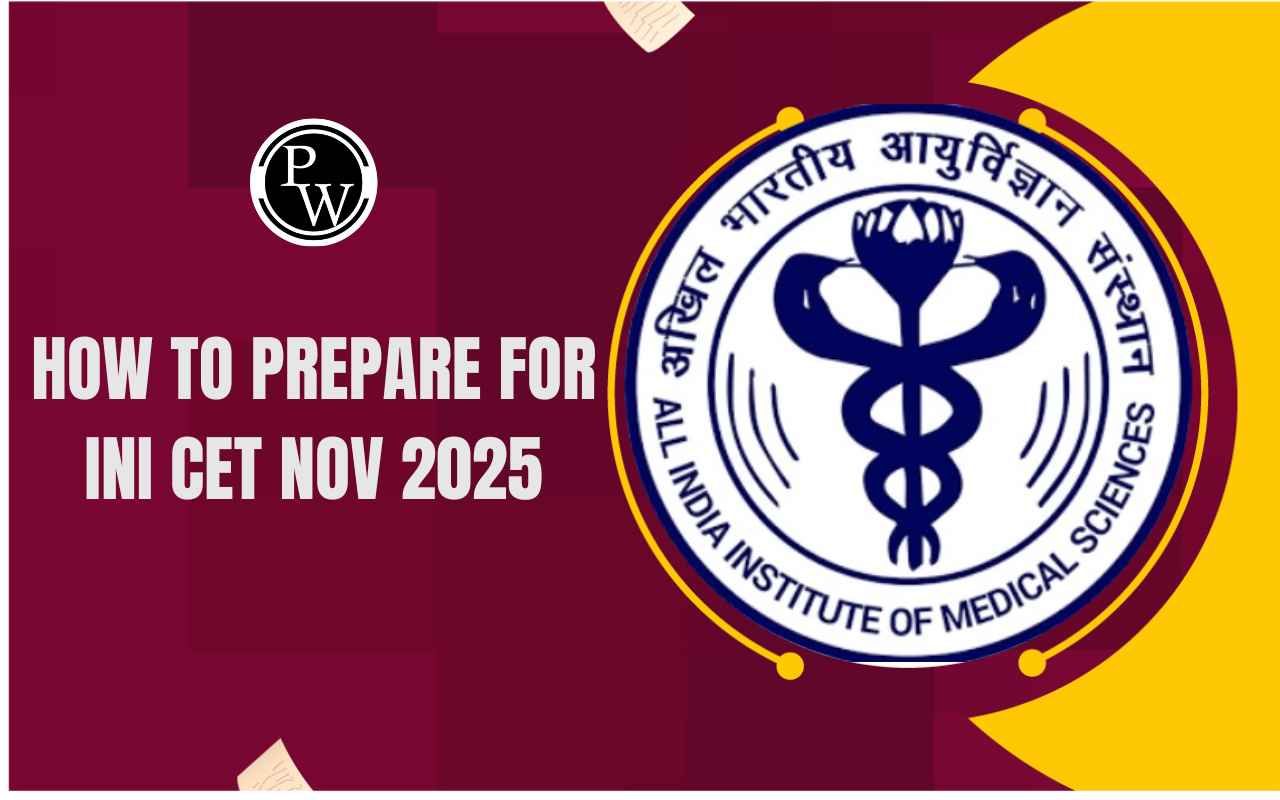

Understanding the NEET PG Normalisation Process: NEET PG (National Eligibility cum Entrance Test for Postgraduate) is one of the most competitive medical entrance exams in India. Each year, over 2.2 lakh candidates appear for it in hopes of securing a postgraduate medical seat. As NEET PG 2025 is scheduled to be held in two shifts on 15 June 2025, many aspirants are already asking: What if one shift is harder than the other?
This is where the normalisation process comes into play. Below provides a detailed overview of understanding the NEET PG normalisation process, how percentiles are calculated, what tiebreaker rules apply, and why this method is essential for ensuring fairness.
Download : PW Med Ed app
What is Normalisation and Why is It Important?
Understanding the NEET PG normalisation process begins with knowing why it exists. Despite best efforts to keep both exam shifts of equal difficulty, variations are inevitable. For instance, questions in one shift might unintentionally be more challenging than those in the other.
To ensure that no candidate is unfairly advantaged or disadvantaged, the NBE uses a statistical method called normalisation. It adjusts scores based on the relative performance of candidates in each shift. This process guarantees an even playing field for all aspirants.
How Is the NEET PG Normalisation Process Done?
NEET PG normalisation process involves converting raw scores into percentile scores, which reflect a candidate’s performance in comparison to others within the same shift. Percentiles are not the same as percentages — a common point of confusion.
Percentile Calculation:
-
Percentiles are computed shift-wise based on the number of test-takers in that particular shift.
-
The highest scorer in each shift is automatically awarded the 100 percentile, regardless of the raw score.
-
A candidate who scores better than 99% of their shift-mates will have a 99 percentile, and so on.
This means that even if a student in a "tougher" shift scores fewer raw marks than someone in an "easier" shift, their percentile could still be equivalent if they performed better relative to others in their own shift.
NEET PG Result 2024 Normalisation Procedure
AIIMS entrance exam guidelines assign candidates to different shifts randomly to ensure fairness and minimize bias. For NEET PG 2024, the National Board of Examinations in Medical Sciences (NBEMS) will use a similar normalization method to AIIMS, which is also applied for the AIIMS INI-CET. With the NEET PG 2024 exam scheduled for August 11 in two shifts, candidates have expressed concerns about the distance of exam centers and the transparency of the score normalization process.
Also Read : NEET PG 2024 Question Paper
NEET PG 2024 Scoring and Percentile Calculation: Step-by-Step Guide
NEET PG 2024 scoring process involves detailed and precise calculations to ensure fair evaluation of candidates across different shifts. This step-by-step guide explains how percentile scores are determined and normalized for accurate performance assessment.
Separate Calculation for Each Shift:
-
-
Process: Raw scores, percentages, and percentiles are calculated independently for each shift.
- Purpose: Ensures fairness by avoiding combining or averaging scores across different shifts.
-
Understanding Percentiles:
-
Definition: Percentiles represent how you performed compared to other candidates.
-
Example: A percentile of 90 means you scored better than 90% of the candidates.
Conversion to Percentile Scores:
-
Method: Your scores are converted into percentile scores ranging from 0 to 100.
-
Top Score: The highest scorer in each shift is assigned a 100th percentile for that shift.
Precision of Percentile Scores:
-
Detail: Percentile scores are calculated to seven decimal places.
-
Objective: Reduces ties and ensures precise differentiation among scores.
Normalization Examples:
- Highest Score in Shift 1: Normalized to 100th percentile if the highest score is 80%.
- Highest Score in Shift 2: Normalized to 100th percentile if the highest score is 82%.
- Highest Score in Shift 3: Normalized to 100th percentile if the highest score is 78%.
- Highest Score in Shift 4: Normalized to 100th percentile if the highest score is 79%.
Result : Each shift’s highest score receives a percentile of 100, clearly differentiating candidates across different shifts.
How Ranks Are Assigned After Normalisation
Once percentiles are calculated, they become the basis for determining NEET PG ranks. Candidates from different shifts but with the same percentile receive the same rank.
For instance:
-
Candidate A from Shift 1 scores 740 and Candidate B from Shift 2 scores 700.
-
If both are the top performers in their respective shifts, they each receive a 100 percentile and are ranked #1.
This illustrates the fairness embedded in the system, despite differences in absolute marks.
Tiebreaker Criteria in NEET PG
Even after normalisation, many candidates may end up with identical percentile scores. To break these ties and assign final ranks, NBE applies the following tiebreaker rules:
- Higher number of correct responses: More correct answers mean a better rank.
- Lesser number of negative responses: Fewer wrong answers give an edge.
- Older candidate: Age is used if the above criteria fail to separate the candidates.
- Higher MBBS aggregate marks: Used as a final deciding factor if all else is equal.
These rules help determine a fair and consistent ranking system, especially in high-competition zones where many candidates score similarly.
Real-World Example of Shift-Based Variations
To understand the NEET PG normalisation process better, consider this example:
|
Rank |
Shift 1 (Easier) |
Shift 2 (Tougher) |
|
1st |
740 marks |
700 marks |
|
2nd |
733 marks |
680 marks |
Despite a 40-mark gap, both top scorers receive a 100 percentile. This demonstrates how normalisation nullifies the impact of question paper difficulty, making the ranking system equitable for everyone.
What Is the Official NEET PG Normalisation Formula?
According to the NBE’s official information bulletin, the formula for score normalisation is designed to compare a candidate’s performance against their shift's group, not the entire pool. While the exact formula is technical, the concept is straightforward:
-
Your score is normalised based on the statistical distribution of scores in your shift.
-
The normalised score reflects your relative standing, not just your raw score.
Common Misconceptions About NEET PG Normalisation
Many students believe that scoring lower in a tougher shift could hurt their chances. But understanding the NEET PG normalisation process reveals that your absolute marks don’t matter as much as your percentile rank. You are only competing with peers in your own shift during the initial score conversion.
Another misconception is that everyone in a tougher shift gets bonus marks — this is false. There are no handouts; instead, your score is evaluated in context, not isolation.
Key Takeaways on NEET PG Normalisation
- NEET PG is conducted in multiple shifts, and normalisation ensures all candidates are judged fairly.
- Percentiles are calculated per shift, with 100 percentile awarded to each shift’s topper.
- Ranks are determined by percentiles, not raw scores.
- Tiebreaker rules ensure fairness when candidates share the same percentile.
- The NEET PG normalisation process addresses exam difficulty differences without penalizing or favoring anyone.
As NEET PG 2025 approaches, it’s vital that candidates remain focused on preparation rather than worrying about exam shift difficulty. Now that you’re confident in understanding the NEET PG normalisation process, you can approach the exam knowing that your performance will be judged fairly, no matter the shift.
Get ready to ace the Medical exam for the dedicated career in medicine. Download the PW Med Ed app now!
Understanding the NEET PG Normalisation Process FAQs
What is the NEET PG normalisation process?
How are percentile scores calculated in NEET PG?
Do raw scores matter more than percentiles in NEET PG ranking?
What happens if two candidates have the same percentile?
Does a tougher shift mean lower chances of a good rank?











